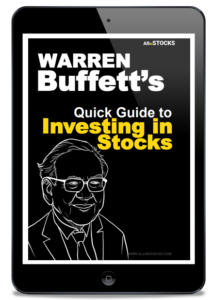The Quest For
INTRINSIC VALUE

By Manuel Maurício
February 22, 2021
When I was learning how to invest in stocks I would listen to famous investors like Warren Buffett talk about the Intrinsic Value of a stock and I would think that it was a precisely determined value.
From the moment I heard that value investing was “buying something for less than what it’s worth”, I set myself to find out how these great investors determined the intrinsic value of the stocks they were buying. Right then and there I learned that the price of a stock and the value of a stock can be two completely different things.
I looked for a formula that would just spit out the exact intrinsic value of a stock. I found some online resources that promised to do this, but I always felt that if it was that simple, everyone would be a millionaire.
Let’s look at the most common ways to determine the intrinsic value of a stock first, and then let’s see how intelligent investors should think about it:
The DCF conundrum
Way back in the day, a company would be valued by subtracting the liabilities from the assets. That’s called the book-value. Slowly, investors began to shift the focus to the earnings power of the business.
Today, it’s common wisdom that a business is worth the sum of its future cash flows discounted back at an appropriate rate. This mathematical calculation is called the Discounted Cash Flows Model, or just DCF.
Although this view is theoretically sound, in practice it’s hard to implement.
First, you need to guess, I’m sorry, estimate, what the future cash-flows of the business will be. Given that no one knows the future, one of the ways to reduce the risk of getting your estimate wrong is to look for businesses that are steady, understandable, and with little risk of being disrupted.
Then you have to define what appropriate means. I won’t go into details on how one should calculate the different discount rates for different situations, suffice is to say that there’s a lot of guessing and the result will necessarily be, although an exact number, inaccurate in nature. If you were to use 10% as your discount rate, you’d end up with a totally different value than if you were to use 9%.
Multiples
The most common way to assess if a stock is cheap or expensive is by using multiples. The multiples make a relative comparison between the price that we pay for a given stock and its profits or even its revenue.
The most common valuation multiples are the Price-to-Earnings ratio or PE, the Enterprise Value-to-EBIT, the Enterprise Value-to-EBITDA, or the Enterprise Value-to-Sales. You’ll often see the Price-to-Sales multiple, but that is plain wrong.
Now, multiples are shortcuts to valuation without doing a DCF. If you buy a company for 15 times earnings, you’re getting an initial return on your money of 6.6% (divide 100% by 15).
Another way to look at it is by thinking that if all those profits were distributed to the shareholders, you would get your money back after 15 years (let’s forget about the taxes for a moment).
Now, the multiples won’t get you to the intrinsic value either. What’s the right multiple for, say, Louis Vuitton? 15 times earnings? 20 times earnings? 22 times earnings?
You see where I’m going…
The AHAAA Moment!
So, if the DCF is theoretically sound, but can give you completely different results depending on the assumptions that you put into it, and the multiples can be quite randomly decided, how do you go about finding the best stocks?
At some moment, I got it. I understood that the intrinsic value of a stock isn’t a precisely defined number, but a range of values. And what you should do is to buy the stock (or any other investment) way below that range. It’s called buying with a margin of safety.
This realization took a huge weight off my shoulders. It meant that my pursuit for a precise number was over and that I could (and should) use my own judgement to determine a range of values at which I would be glad to buy a particular business.
But better than this realization was the internalization of what I call “The concept of obviousness“. Warren Buffett is known for saying that you don’t need to know a man’s weight to know that he’s fat nor do you need to know a woman’s age to know that she’s old. The simplicity of this explanation is genius.
If you look for those businesses that are obviously mispriced, you won’t have to come up with a precise figure for their value. It will be so obvious that any back-of-the-napkin calculation will be enough to understand that you’re buying a bargain.
Conclusion
It’s important that you try to put a value on the businesses you’re researching, but remember:
- The intrinsic value is a range of values, not a precisely determined number
- DCF’s are good, but they can give you a sense of inaccurate preciseness
- Multiples are good, but they’re shortcuts to valuation and can be arbitrarily defined
- Always buy at a much lower price than the range of values that you believe the business is worth.
- A good investment should hit you in the head like a hammer
DISCLAIMER
The material contained on this web-page is intended for informational purposes only and is neither an offer nor a recommendation to buy or sell any security. We disclaim any liability for loss, damage, cost or other expense which you might incur as a result of any information provided on this website. Always consult with a registered investment advisor or licensed stockbroker before investing. Please read All in Stock full Disclaimer.

READY TO ACCELERATE YOUR RETURNS?
If you liked this article and want to get better at picking stocks, simply click the button below to get started…
